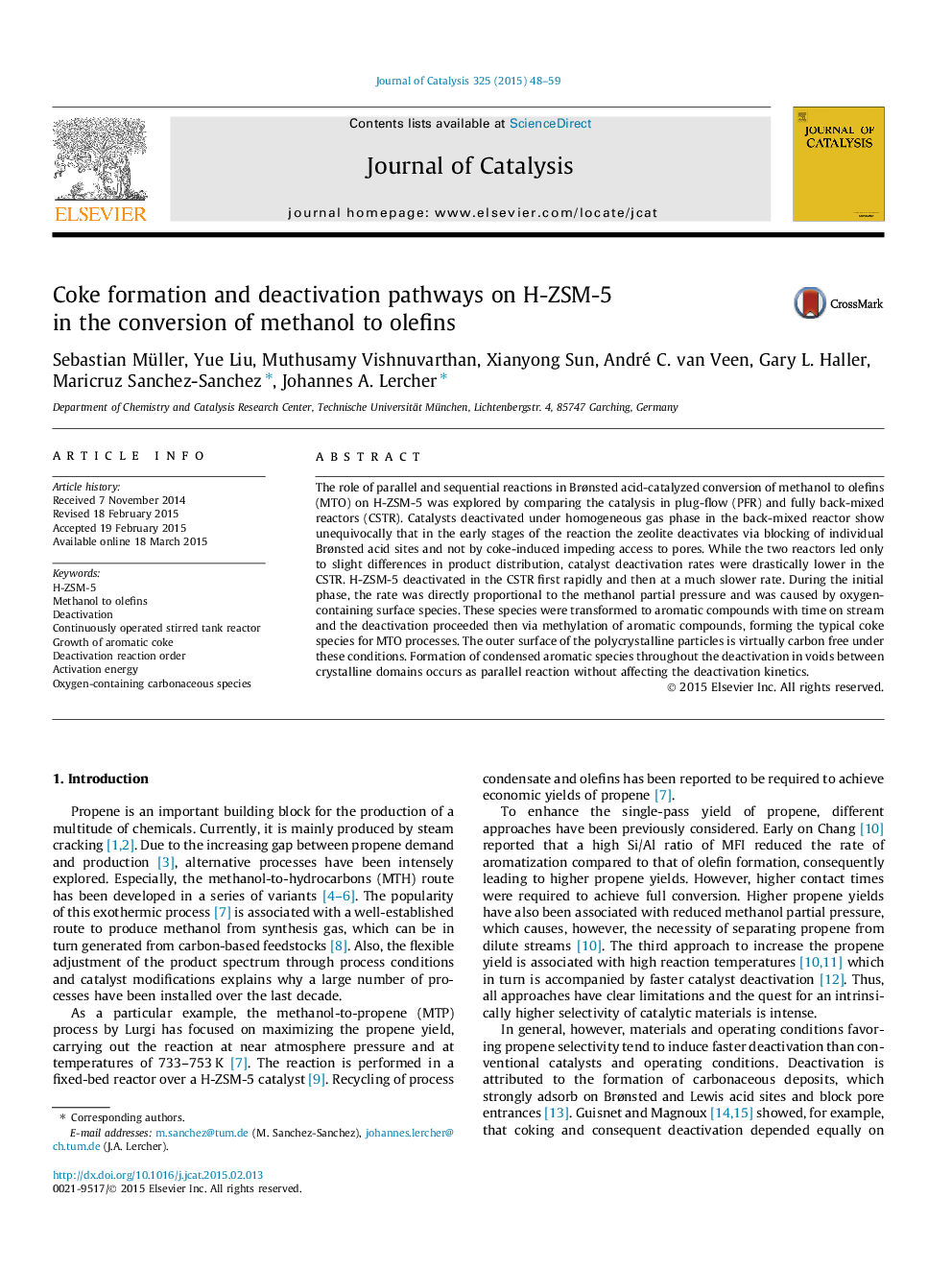| Article ID | Journal | Published Year | Pages | File Type |
|---|---|---|---|---|
| 60888 | Journal of Catalysis | 2015 | 12 Pages |
•Deactivation of H-ZSM-5 in methanol to olefins studied in a PFR and a CSTR.•Homogeneous deactivation of catalysts shed light on nature and location of coke.•Two kinetic regimes are found for carbon formation.•High local methanol concentrations led to formation of highly deactivating coke.•Oxygen-containing surface species are responsible for fast deactivation rates.
The role of parallel and sequential reactions in Brønsted acid-catalyzed conversion of methanol to olefins (MTO) on H-ZSM-5 was explored by comparing the catalysis in plug-flow (PFR) and fully back-mixed reactors (CSTR). Catalysts deactivated under homogeneous gas phase in the back-mixed reactor show unequivocally that in the early stages of the reaction the zeolite deactivates via blocking of individual Brønsted acid sites and not by coke-induced impeding access to pores. While the two reactors led only to slight differences in product distribution, catalyst deactivation rates were drastically lower in the CSTR. H-ZSM-5 deactivated in the CSTR first rapidly and then at a much slower rate. During the initial phase, the rate was directly proportional to the methanol partial pressure and was caused by oxygen-containing surface species. These species were transformed to aromatic compounds with time on stream and the deactivation proceeded then via methylation of aromatic compounds, forming the typical coke species for MTO processes. The outer surface of the polycrystalline particles is virtually carbon free under these conditions. Formation of condensed aromatic species throughout the deactivation in voids between crystalline domains occurs as parallel reaction without affecting the deactivation kinetics.
Graphical abstractFigure optionsDownload full-size imageDownload high-quality image (215 K)Download as PowerPoint slide
